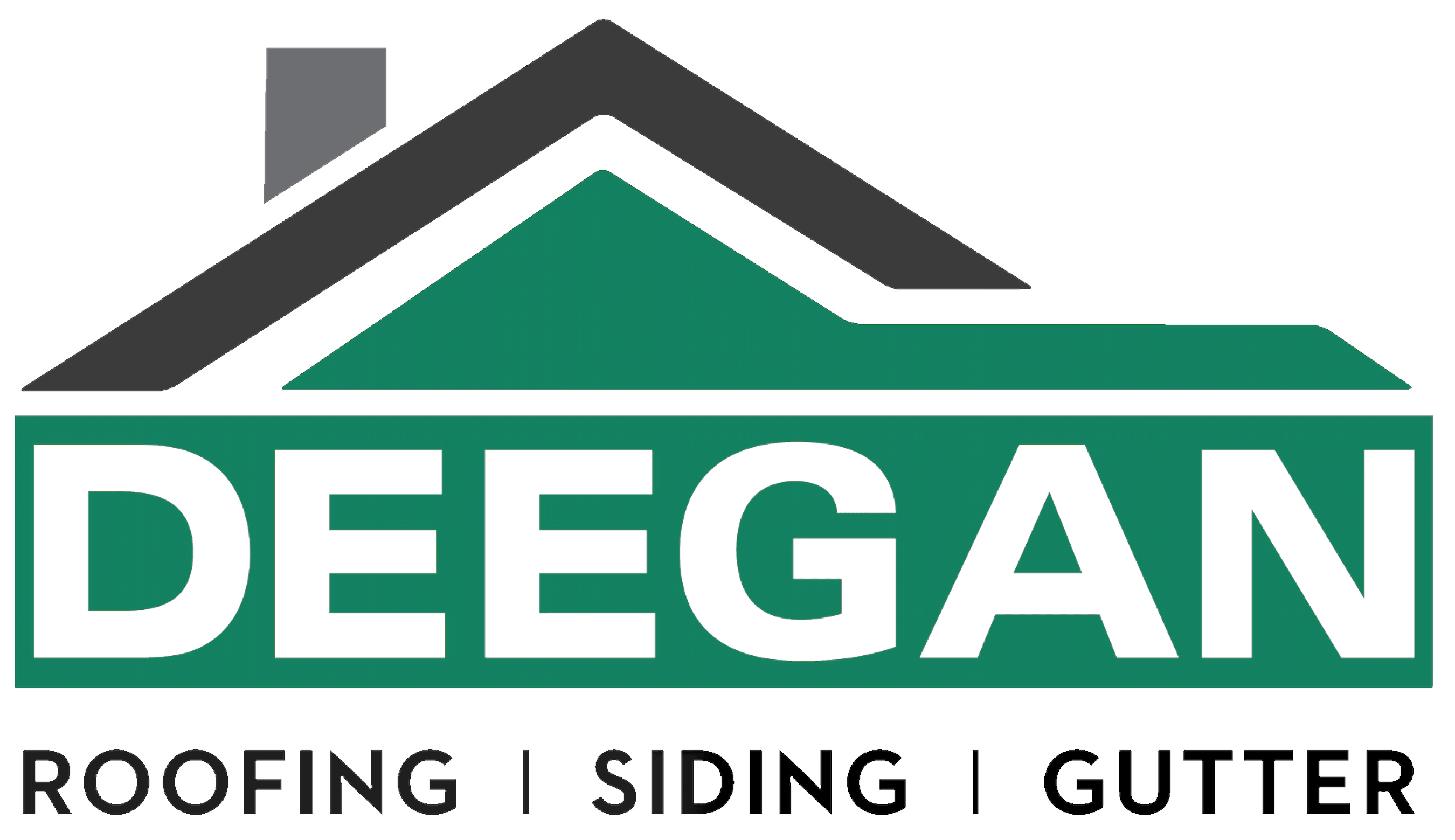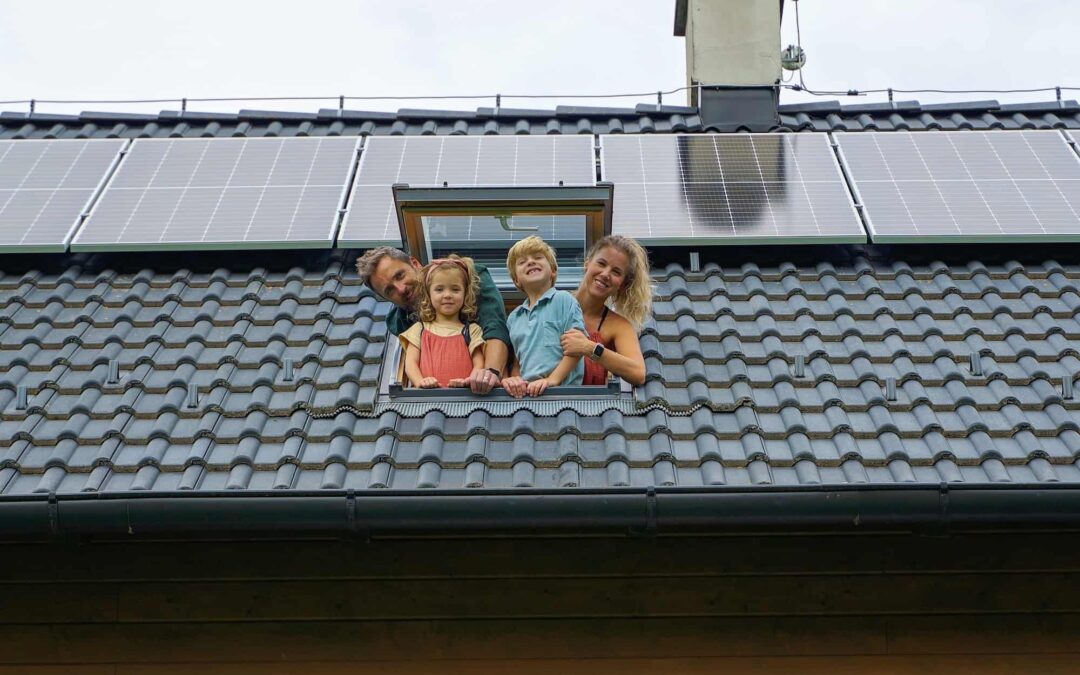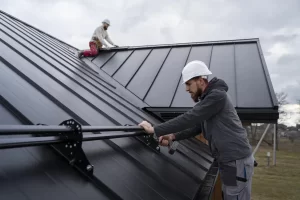When homeowners think about boosting home energy efficiency, they often focus on windows, insulation, or appliances. But there’s another major player that’s often overlooked: your roof. Replacing an old or damaged roof with a modern, energy-efficient system can significantly cut energy waste, improve comfort, and even lower your monthly utility bills. In this in-depth guide, we’ll explore how a new roof can improve your home’s energy efficiency, what materials and features make the biggest difference, and why it’s a smart long-term investment.
Why Roof Performance Matters for Energy Efficiency
Your roof acts as the first line of defense against the elements — shielding your home from heat, cold, wind, and moisture. A poorly performing roof can allow heat transfer in and out, forcing your HVAC system to work harder to maintain indoor comfort. Over time, this not only raises your energy bills but also reduces the lifespan of your heating and cooling systems.
By contrast, a new roof equipped with modern materials, reflective coatings, and proper ventilation creates a protective, insulating barrier. This reduces thermal loss, stabilizes indoor temperatures, and keeps your home energy-efficient year-round. When combined with attic insulation, a new roof can dramatically improve your Home’s Energy Efficiency and overall energy profile.
1. Reflective Roofing Materials Reduce Heat Absorption
One of the most impactful upgrades is using reflective roofing materials, also known as cool roofs. Traditional dark asphalt shingles absorb sunlight and heat, causing attic temperatures to soar — sometimes reaching 150°F or more on hot days. This trapped heat radiates downward, raising your home’s internal temperature and overloading your air conditioning system.
Modern roofing materials like cool asphalt shingles, metal roofs with reflective coatings, or light-colored tiles are designed to reflect more sunlight and absorb less heat. According to the U.S. Department of Energy, cool roofs can lower roof surface temperatures by up to 50°F, dramatically reducing the heat load on your home. That translates into cooler indoor spaces and lower summer energy costs.
2. Better Insulation Supports Thermal Performance
Many homeowners don’t realize that a roof upgrade also improves insulation performance. Older roofs often lack proper insulation layers or have degraded materials that no longer function effectively. A new roofing system integrates high-quality underlayment and decking materials that improve thermal resistance.
When paired with attic insulation, this creates a robust thermal barrier that prevents heat from escaping in winter or entering in summer. This balanced system keeps your home warmer in cold weather, cooler in hot weather, and reduces the demand on your furnace and air conditioner. Over time, these energy savings can add up significantly.
3. Improved Ventilation Reduces Energy Waste
Proper roof ventilation is a critical component of energy efficiency. Without sufficient airflow, attics can trap heat and moisture, causing problems in both summer and winter. Hot, stagnant attic air in summer raises indoor temperatures, while in winter, trapped moisture can lead to mold growth and ice dams.
A new roof typically includes modern ventilation systems — such as ridge vents, soffit vents, and gable vents — that promote continuous airflow. This keeps attic temperatures more stable, prevents moisture problems, and supports overall energy performance. Investing in upgraded ventilation means your HVAC system runs more efficiently and lasts longer.
4. Energy-Efficient Roof Coatings Add Extra Protection
Beyond materials, roof coatings offer another layer of energy-saving potential. Reflective coatings, often used on metal or flat roofs, bounce sunlight away from the roof surface, minimizing heat absorption. These coatings can be applied during a roof replacement or retrofitted onto certain roofing systems.
Energy Star-certified roof coatings can lower roof temperatures by up to 30%, reducing cooling loads in hot climates. This can also extend the lifespan of your roofing materials by protecting them from UV damage. With less heat stress, your home stays cooler, and you enjoy lower air conditioning costs.
5. Modern Roofing Systems Seal Energy Leaks
Old, damaged, or poorly installed roofs are notorious for developing energy leaks — gaps, cracks, and holes that allow conditioned air to escape and outside air to infiltrate. These leaks not only waste energy but also increase humidity levels, reduce indoor comfort, and put extra strain on your HVAC system.
A new roof installed by a reputable contractor ensures tight seals, proper flashing, and high-performance materials that eliminate these weak points. Combined with updated attic insulation and ventilation, this creates an energy-efficient envelope that reduces heat transfer and keeps your home comfortable year-round.
6. Material Choice Impacts Long-Term Efficiency
Not all roofing materials perform equally in terms of energy efficiency. Here’s a quick overview:
-
Metal Roofs: Highly reflective, durable, and recyclable; excellent for hot climates.
-
Clay or Concrete Tiles: Naturally insulating and reflective, though heavy.
-
Cool Asphalt Shingles: Affordable, widely available, with reflective granule options.
-
Synthetic Roofing Materials: Lightweight, durable, and customizable for performance.
Each material offers different benefits depending on your climate, home design, and budget. An experienced roofer can help you select the best material to maximize your home’s energy efficiency.
7. A New Roof Supports Solar Panel Installations
If you’re considering solar panels, a new roof provides the perfect foundation. Many homeowners discover that installing solar on an older roof is risky, as they may need to tear off and replace the roof soon after. Combining a roof replacement with a solar upgrade ensures that your roof can support the panels and optimize their performance.
Solar panels not only generate renewable energy but also provide additional shading, reducing the amount of heat reaching the roof. This combined system can dramatically improve your home’s overall energy profile and reduce reliance on traditional utilities.
8. Boosting Energy Efficiency Adds to Home Value
Investing in a new, energy-efficient roof doesn’t just lower your bills — it increases your home’s resale value. Buyers today are increasingly energy-conscious and willing to pay more for properties that offer lower utility costs and sustainable features. A modern, well-insulated, and ventilated roof can be a key selling point that sets your home apart in the real estate market.
Moreover, many states offer rebates, tax credits, or energy efficiency incentives for homeowners who upgrade to energy-saving materials. This makes the upfront investment even more attractive.
9. The Environmental Impact of an Energy-Efficient Roof
Beyond financial savings, installing an energy-efficient roof reduces your home’s carbon footprint. By lowering the energy needed to heat and cool your home, you directly decrease greenhouse gas emissions associated with power generation. This makes a new roof not just a home improvement — but an environmental contribution.
Choosing recyclable or sustainable roofing materials further enhances this impact. Many metal roofs, for example, are made from recycled content and can be recycled again at the end of their lifespan, reducing landfill waste.
10. Signs It’s Time for a Roof Replacement
So, how do you know when it’s time to replace your roof to improve Home’s Energy Efficiency? Watch for these signs:
-
Curled, cracked, or missing shingles
-
Frequent roof leaks or water damage
-
Sagging or soft spots on the roof deck
-
Mold or mildew growth in the attic
-
Rising energy bills despite HVAC maintenance
If you notice one or more of these issues, it’s worth calling a roofing professional for an inspection. They can assess your current roof’s condition and recommend solutions tailored to your energy-saving goals.
Why Choose Deegan Roofing for Your Energy-Efficient Roof?
At Deegan Roofing, we specialize in providing homeowners with high-quality, energy-efficient roofing solutions. With over 30 years of experience in the industry, our team understands the latest materials, technologies, and installation practices that maximize performance and lower energy costs.
We work closely with each client to assess their specific needs, recommend the best roofing options, and ensure expert installation that meets the highest standards. Whether you’re replacing an aging roof, improving your home’s energy profile, or preparing for a solar upgrade, Deegan Roofing is your trusted partner for success.
Contact Deegan Roofing Today
Ready to explore how a new roof can transform your home’s energy efficiency? Contact Deegan Roofing today to schedule a professional consultation. We’ll provide a detailed assessment, recommend the best solutions, and deliver expert craftsmanship you can rely on.
📞 Phone: (908) 322-6405
✉️ Email: info@deeganroofing.com
📍 Address: 61 Terrill Rd, Scotch Plains, NJ 07076
🌐 Website: www.deeganroofing.com



